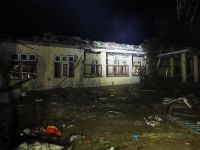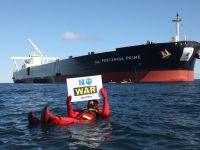Libya’s National Oil Corporation (NOC) is engaged in negotiations with international oil companies (IOCs) to start signing a number of exploration and production (E&P), midstream and downstream contracts by June 2001, according to NOC Chairman Ahmed Abdulkarim Ahmed in an interview with MEES Editor-in-Chief Walid Khadduri.
The aim of Libya’s oil authorities is to find partners who can contribute technology, management, marketing and finance.
The areas open for investment include the whole spectrum of the oil and gas industry, encompassing exploration in newly designated blocks, enhancement of production from small and difficult fields, as well as nearly depleted fields, building of midstream projects, and the expansion and upgrading of the refining and petrochemical industry.
Emphasis is also being placed on the development and export of natural gas, according to Mr Ahmed.
The opening up of Libya’s oil and gas sector to IOCs is a strategic decision taken by the highest executive and legislative authorities in the country.
The fact that there have been major changes in the leadership of the oil sector in the past few months has not affected this policy which was set in motion following the suspension of sanctions by the UN in early 1999 and the holding of a major conference on the Libyan oil and gas industry in Geneva in April 1999.
This was followed last May with a conference in Zawiya attended by 49 IOCs, mainly from Europe, but also from Canada, Asia and the Middle East. A total of 137 blocks, 835,000 sq km, are being made available to the IOCs for exploration. Three packages of high, medium and low risk areas, as well as offshore acreage, are open to bidding.
In the aftermath of the various forums, data rooms have been opened and talks with IOCs have started. Detailed negotiations are planned for early January 2001, and agreements are scheduled to be signed with a number of firms by mid-2001, according to Mr Ahmed. Three full-time and dedicated teams of NOC professionals and experts are conducting the negotiations.
The first is the E&P team headed by Ezzedin El-Hamyouni, member of the NOC Board of Directors and Director-General of Joint Ventures, with 'Azzam Misellati as rapporteur. The team is negotiating with around 40 companies.
The geological data room opened some three months ago and has been visited more than once by some firms. The data room will close by end-November.
The second is the field development team, also headed by Mr Hamyouni, with Muhammad Abu 'Abd Allah as rapporteur. The focus of this group is on 10-12 fields: some have difficult structures, others are near depletion while others still may need enhanced oil recovery (EOR).
The proposals cover the technology to be used, the incremental output to be achieved from the fields and the time framework for the proposed program. These are basically new areas of operation for NOC and much work needs to be done before this group signs agreements.
The Haram field, discovered some 20 years ago in the Sirte Basin, is one of the fields included in this category. It has not been developed because of the crude’s specificity and the complexity of the reservoir. Around four to five proposals have been submitted by IOCs to develop Haram.
The third team, focusing on downstream investments, has Kamel Jernaz as rapporteur. NOC sent letters last summer to 72 companies inviting them to participate on a 50-50 joint venture basis in upgrading and expanding facilities at Ras Lanuf, Brega and Zawiya, as well as building a new 20,000 b/d refinery at Sabha.
Approximately 20 companies have responded with proposals, including some concerning midstream projects such as the expansion of the Zawiya port facility. While lengthy negotiations will be needed prior to reaching agreements, Mr Ahmed believes some deals will be signed by next June.
The three teams, working independently, report directly to the NOC Board of Directors, and meet monthly with the NOC Board to review progress.
The basis of the negotiations is Libya’s Hydrocarbon Law and subsequent amendments, legislation and agreements. According to Mr Ahmed, “The agreements that we sign with the companies, subsequently approved by the General People’s Committee (cabinet), will have the effect of law.”
The Libyan oil authorities have been working for around four years to draft a new hydrocarbon law in order to bring the legislation into line with recent developments in the international oil industry and to include provisions omitted by existing regulations, such as those relating to the refining, petrochemicals and gas sectors (MEES, 10 January).
Production Capacity:
Libya’s current production capacity is estimated to be 1.6mn b/d, and in two years’ time it is expected to reach 2mn b/d.
However, its current production is within the OPEC production allotment of 1.431mn b/d. Two development programs have been approved for an additional capacity of 200,000 b/d: Lasmo’s Elephant field with an initial production of 50,000 b/d rising in a second stage to 150,000 b/d; and Lundin’s En Naga North and West field in block NC-177 with a capacity of 40,000 b/d. It is expected that 90,000 b/d of this new capacity will be available by end-2001.
TotalFinaElf has also proposed a development program for its offshore block NC-137 with a capacity of 40,000 b/d.
Standstill Agreements:
As a result of the Executive Order issued by former US President Ronald Reagan in January 1986 imposing unilateral sanctions against Libya, American companies’ assets in Libya were put in “suspended animation.”
Consequently, five US firms signed a Standstill Agreement with NOC in June 1986 to protect their respective concessionary interests in Libya.
This allowed NOC to operate and develop the fields, while the US firms continued to retain the rights and obligations under the original agreements until such time that they could re-enter Libya.
Mr Ahmed said that the honoring of “standstill agreements is an example of NOC’s adherence to its international commitments. Even in the most difficult periods, we upheld our agreements faithfully.
We did not exploit the situation. Our principle is that if the circumstances are beyond the partner’s will, we have enough flexibility to stand with our partner until the crisis is over.
Meanwhile, we continue to have contacts with our partners, and we continue to evaluate the situation together.”
MEES learns that NOC and the US firms have been holding continuous talks concerning a framework for re-entry into their concessions.
The talks are focusing on preparing a Settlement Agreement that would cover a mutual understanding on all outstanding re-entry issues. That being said, there are still many potential problems.
Firstly, how long will the Libyan oil authorities wait for the US to make up its mind on whether or not to allow American firms to return to Libya to take charge once more of their assets there? While one deadline is tied to the results of the Lockerbie trial and the amount of compensation to be paid to the families of the victims, another could be the expiration of the ILSA sanctions next August.
It is difficult to see how NOC can go on waiting beyond these two deadlines – both expected next year – after having waited some 15 years already for the US firms to come back. Whether the next US president decides against renewing the Executive Orders against Libya remains to be seen.
Secondly, how will NOC deal with the proposals put forward by several major European oil firms for the semi-developed and unexplored areas that lie within the permits held by US companies? While NOC has made it very clear, and the current round of negotiations demonstrates, that major producing fields are not open for bidding, there are areas within the US assets that have potential oil and gas reserves but have not yet been developed.
Again, according to Mr Ahmed, “We have not offered already producing fields to IOCs. But as for those areas that are not developed, or under-developed, we are sending a message to the US firms that we are negotiating about them.
We are asking: are you interested? Can you come in? Can you pay your share? We don’t want to break our agreements with them and we want to protect their rights. But we also don’t want to forego good investment opportunities forever.”
Master Gas System:
As early as 1981, NOC approved a general plan for gas utilization. However, the plan was not applied and has been revised several times because of the political circumstances during the past two decades that created many obstacles hindering the normal growth of the industry.
NOC forecasts that domestic gas demand could increase from around 12 bn cu ms (BCM) in 1999 to approximately 22BCM in 2010. To meet this demand, NOC has invited the IOCs to participate in exploration, development and construction of infrastructure, and the marketing of gas – both domestically and internationally.
One of the main topics under discussion is the use of international gas pricing methods for domestic use and the oil-for-gas arrangements.
NOC’s main distribution point for its countrywide gas network, with production capacity of 1.4bn cu ft/d, is the northern coastal town of Marsa el-Brega. So far, the eastern part of the pipeline grid has been extended to Zuietina and Benghazi, feeding power and cement plants.
The western part of the coastal system, currently under construction by the Russian firm Zangas, has already reached Khoms, with work under way to extend it to Tripoli, Zawiya and Mellita in order to feed the power station, cement plants and steel factory in the region.
The other major gas development involves transforming the western coastal town of Mellita into the gas-gathering center for the country.
It will receive gas from offshore block NC-40 and the onshore field Wafa as part of the Western Libya Gas Project. Gas will be processed and treated, with 8BCM/y of dry gas to be exported to Italy by sub-sea pipeline and 2BCM/y used domestically. TotalFinaElf will also take its offshore gas from block NC-137 to Mellita for separation and treatment.
(mees)
© 2000 Mena Report (www.menareport.com)







